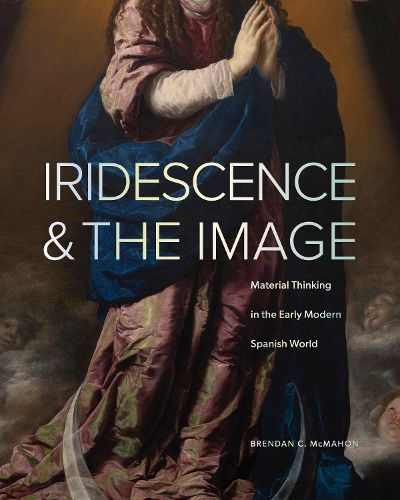Readings Newsletter
Become a Readings Member to make your shopping experience even easier.
Sign in or sign up for free!
You’re not far away from qualifying for FREE standard shipping within Australia
You’ve qualified for FREE standard shipping within Australia
The cart is loading…






At the turn of the seventeenth century, people in Spain and Mexico were fascinated by iridescence. Artists stretched the capacities of conventional media in attempts to capture its shifting hues, while others integrated iridescent materials directly into their work. At the same time, naturalists strove to convey the changing colors of these substances in printed texts, theologians and political commentators invoked them in tracts and treatises, and playwrights and poets wove them through the scripts of comedies and into the stanzas of sonnets.
In Iridescence and the Image, Brendan C. McMahon explores this preoccupation with such materials-including shot fabric, hummingbird feathers, mother of pearl, and opals-in the early modern Spanish world. Taking the virtuosic renderings of tornasol (shot silk) by the Spanish painter Antonio de Pereda (1611-1678) as a point of departure, he shows that the ubiquity of these materials in a broad array of period cultural productions stemmed from the ways in which their unique properties undermined trust in visual perception-and in visual images themselves. Ultimately, McMahon argues, iridescence provided a way for people to grapple with profound questions about seeming and being, deception and revelation, and the nature of truth itself.
$9.00 standard shipping within Australia
FREE standard shipping within Australia for orders over $100.00
Express & International shipping calculated at checkout
Stock availability can be subject to change without notice. We recommend calling the shop or contacting our online team to check availability of low stock items. Please see our Shopping Online page for more details.
At the turn of the seventeenth century, people in Spain and Mexico were fascinated by iridescence. Artists stretched the capacities of conventional media in attempts to capture its shifting hues, while others integrated iridescent materials directly into their work. At the same time, naturalists strove to convey the changing colors of these substances in printed texts, theologians and political commentators invoked them in tracts and treatises, and playwrights and poets wove them through the scripts of comedies and into the stanzas of sonnets.
In Iridescence and the Image, Brendan C. McMahon explores this preoccupation with such materials-including shot fabric, hummingbird feathers, mother of pearl, and opals-in the early modern Spanish world. Taking the virtuosic renderings of tornasol (shot silk) by the Spanish painter Antonio de Pereda (1611-1678) as a point of departure, he shows that the ubiquity of these materials in a broad array of period cultural productions stemmed from the ways in which their unique properties undermined trust in visual perception-and in visual images themselves. Ultimately, McMahon argues, iridescence provided a way for people to grapple with profound questions about seeming and being, deception and revelation, and the nature of truth itself.